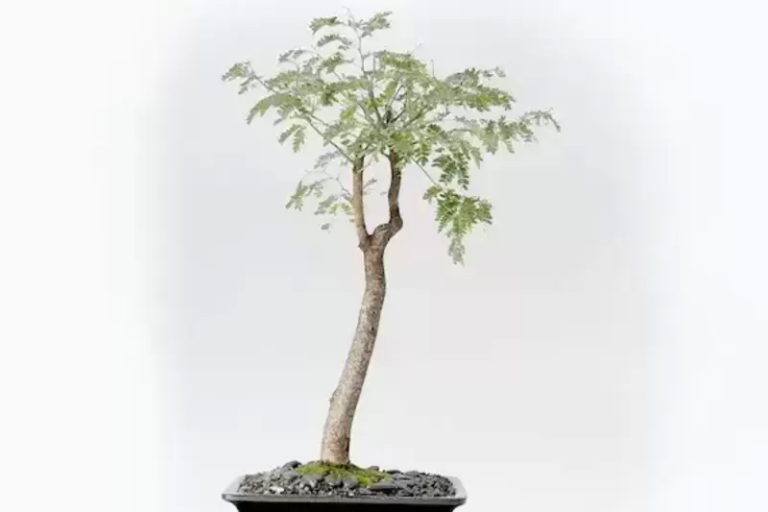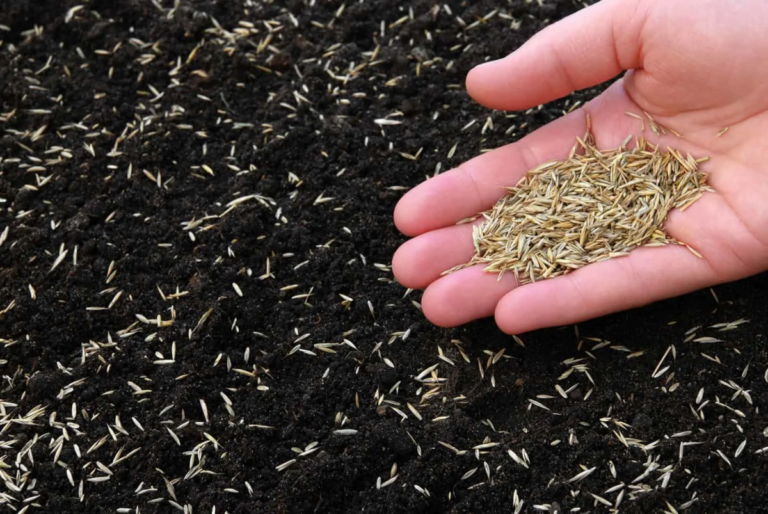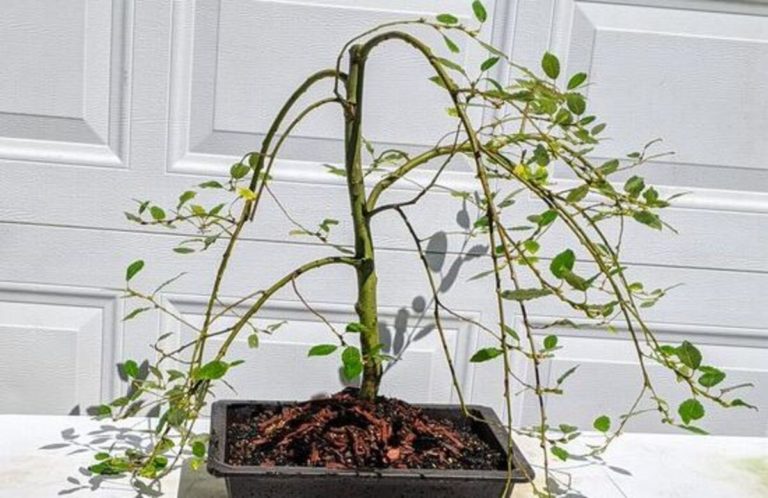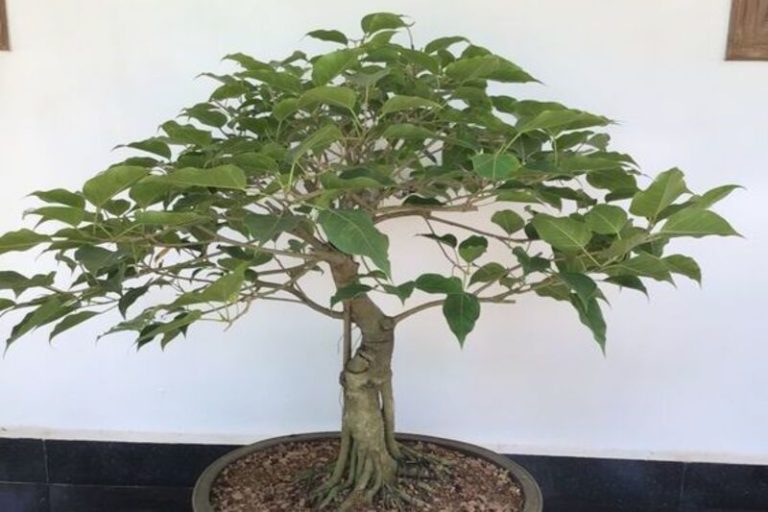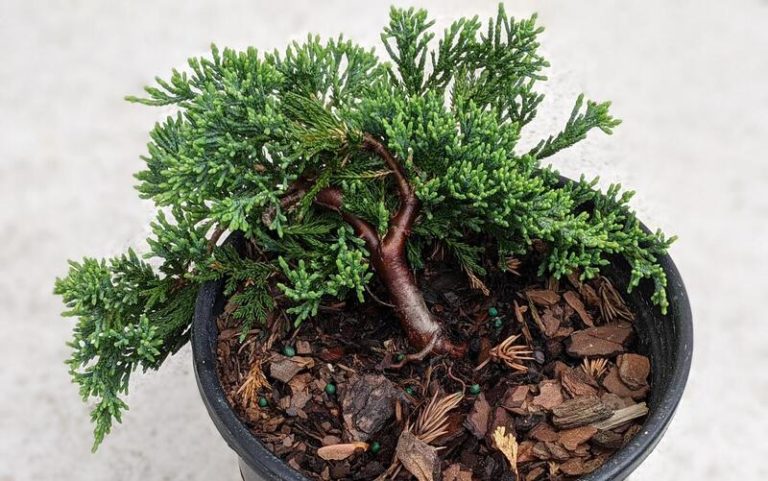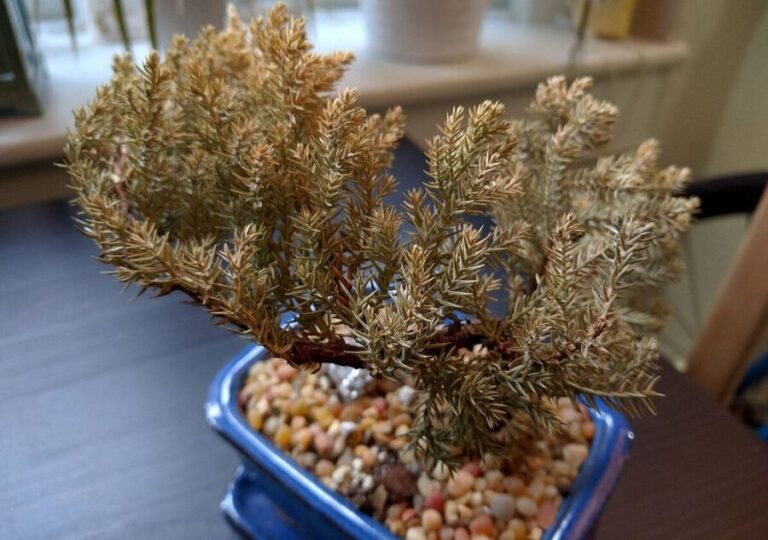Shore Pine Bonsai: Sculpting Nature’s Coastal Beauty
Bonsai is a traditional art form that involves growing miniature trees in containers. One fascinating variety is the shore pine bonsai, which has its unique charm. In this article, we will explore the world of shore pine bonsai, understand its characteristics, learn how to care for it, and discover techniques for styling and showcasing these beautiful trees.
What is a Shore Pine Bonsai?
A shore pine bonsai is a small, carefully cultivated tree that resembles a mature shore pine in a miniature form. These bonsai trees exhibit the unique characteristics of shore pines, such as twisted branches, needle-like foliage, and rugged bark. They require specific care, including proper sunlight, well-draining soil, and regular pruning and wiring. Shore pine bonsai can be styled in different ways and are appreciated for their beauty in bonsai exhibitions and shows. They offer a captivating representation of nature’s beauty in a small, living sculpture.
History and Origins of the Shore Pine Bonsai
The background and roots of the shore pine bonsai can be traced back to the art of bonsai itself, which started in China more than a thousand years ago. Growing and shaping small trees slowly made its way to Japan, where it took off and became a big part of Japanese culture.
As for where the shore pine bonsai came from, it’s important to know where the shore pine (Pinus contorta) tree grows in the wild. Shore pines are native to coastal areas, especially in North America, where they grow in sandy or rocky soil along shorelines and beaches. These trees have changed so that they can survive difficult conditions like high winds and salt spray.
Most likely, the art of growing shore pine trees in pots and shaping them into bonsai began in Japan, where the art of growing and making bonsai was well developed. Artists and people who like bonsai in Japan tried to capture the beauty and spirit of the shore pine in a small size, catching its unique traits and rugged charm.
Shore pine bonsai have been grown and styled in different ways over time, using classic bonsai principles and styles. Artists got better at shaping the tree’s branches, making the base move, and drawing attention to the tree’s natural roughness. The art of shore pine bonsai kept getting better as people carefully watched and tried new things.
Today, you can find shore pine bonsai trees not only in Japan, but also in other places where bonsai is grown. Bonsai fans and artists all over the world love the uniqueness and beauty of shore pine bonsai, which keeps pushing the limits of this art form.
The history and roots of shore pine bonsai show the long history and cultural importance of bonsai as an art form and the love for the beauty of nature captured in small trees.
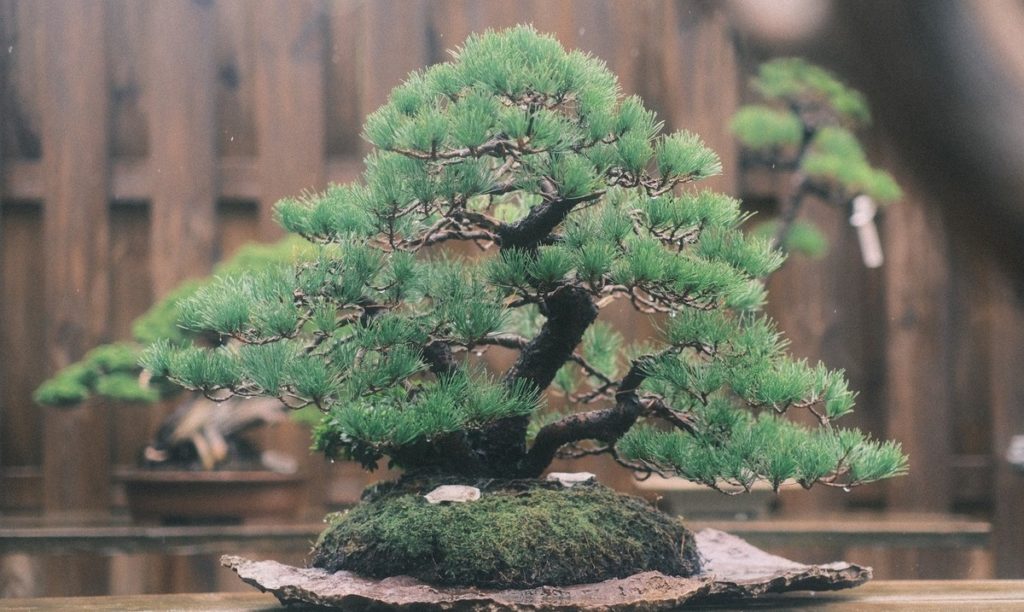
Shore Pine Bonsai and Their Symbolism
Shore pine bonsai, like all bonsai trees, hold symbolic meaning and significance beyond their physical beauty. Here are some aspects of symbolism associated with shore pine bonsai:
Resilience: Shore pines are known for being able to grow well in tough coastal settings, where they have to deal with strong winds, salt spray, and other difficult conditions. As bonsai, they represent strength and the ability to get through hard times. They teach us to stay strong and adaptable when things get hard.
Connection to Nature: Bonsai, including shore pine bonsai, are often seen as a representation of nature in miniature form. They serve as a reminder of our connection to the natural world and the importance of preserving and appreciating its beauty.
Reflection of Age and Wisdom: The contorted branches, rugged bark, and weathered appearance of shore pine bonsai can evoke a sense of age and wisdom. These trees symbolize the passage of time and the wisdom gained through experience.
Simplicity and Tranquility: Bonsai cultivation encourages a sense of simplicity and tranquility. Shore pine bonsai, with their elegant yet unassuming presence, embody these qualities and can serve as a reminder to find peace and serenity amidst the complexities of life.
Balance and Harmony: Bonsai artistry emphasizes balance and harmony in the design and composition of the tree. Shore pine bonsai, with their carefully arranged branches and foliage, symbolize the importance of finding balance and harmony in our own lives.
Patience and Contemplation: The slow and meticulous process of cultivating and shaping a shore pine bonsai requires patience and contemplation. These trees remind us of the value of patience, the rewards of taking our time, and the joy that can be found in the journey itself.
Miniaturization of the Natural World: Bonsai, like shore pine bonsais, help us see the beauty of nature on a smaller scale. They tell us that we can find beauty and wonder in even the smallest things, and they teach us to pay attention to the small details that we often miss.
Shore pine bonsai, like any other bonsai tree, can mean different things to different people and groups. They ask us to think about the greater meanings of nature, life, and where we fit in the bigger world.
Characteristics of the Shore Pine Bonsai
The shore pine bonsai (Pinus contorta) possesses several distinct characteristics that contribute to its unique appeal. Here are some key features of the shore pine bonsai:
Size: Shore pine bonsai trees are typically smaller in size compared to their full-grown counterparts in nature. They are carefully cultivated and trained to maintain a compact form, making them suitable for indoor or outdoor display in limited spaces.
Foliage: The foliage of the shore pine bonsai consists of needle-like leaves that are usually dark green or bluish-green in color. The needles are arranged in pairs and can vary in length, creating a textured appearance. The foliage adds to the bonsai’s overall aesthetic and natural appeal.
Trunk and Bark: The trunk of a shore pine bonsai often exhibits a rugged and weathered appearance, resembling the texture of mature trees found in coastal regions. The bark can be rough and may display interesting patterns and colors, enhancing the bonsai’s character and sense of age.
Branch Structure: Shore pine bonsai trees tend to have contorted or twisted branches, reflecting the tree’s adaptation to withstand coastal winds. The branches can be styled and trained to create movement and a sense of visual interest in the overall design of the bonsai.
Deadwood: Deadwood techniques, such as jin (stripped bark) and shari (artificially created deadwood), can be applied to the shore pine bonsai to mimic the natural weathering and aging process. These techniques enhance the bonsai’s rugged and weathered appearance, adding a touch of authenticity and character.
Naturalistic Styling: Shore pine bonsai are often styled in a manner that replicates the growth patterns observed in their natural habitat. The goal is to capture the essence of a mature shore pine tree in a miniature form, incorporating asymmetry, irregular branching, and a sense of wildness.
Hardy Nature: Like their full-sized counterparts, shore pine bonsai trees exhibit a hardy nature and can tolerate a range of growing conditions. They are known for their ability to withstand strong winds and coastal environments, making them suitable for bonsai enthusiasts in various regions.
The combination of these characteristics contributes to the unique charm and natural beauty of the shore pine bonsai. It is these features that make the tree a captivating and sought-after choice for bonsai enthusiasts around the world.
Types of Shore Pine Bonsai
There are several variations and types of shore pine bonsai that enthusiasts can explore. While the core species is Pinus contorta, there are different forms and cultivars that offer distinct characteristics. Here are some types of shore pine bonsai:
Pinus contorta var. contorta: This is the typical form of shore pine bonsai, showcasing the natural characteristics of the species. It features contorted branches, twisted trunks, and a rugged appearance.
Pinus contorta var. latifolia: This variety of shore pine bonsai has broader and longer needles compared to the standard form. The foliage is usually denser, creating a lush appearance.
Lodgepole Pine (Pinus contorta var. murrayana): Also known as the Sierra Lodgepole Pine, this variety of shore pine bonsai exhibits long, slender needles and a more upright growth habit. It has a graceful and elegant appearance.
Shore Pine Cultivars: There are cultivated varieties of shore pine bonsai that have been selected and bred for specific characteristics. These cultivars may feature variations in needle color, growth habit, or branching patterns, offering unique options for bonsai enthusiasts.
It’s important to note that the availability of specific types and cultivars may vary depending on the region and nursery sources. Bonsai enthusiasts can explore local nurseries, bonsai clubs, or online sources to find a suitable variety of shore pine bonsai that matches their preferences.
Each type and cultivar of shore pine bonsai brings its own charm and unique qualities to the art form. Whether one prefers the contorted branches of the standard form or the elegance of a lodgepole pine, there is a variety of shore pine bonsai to suit different aesthetic preferences and artistic visions.
How to Grow a Shore Pine Bonsai
Growing a shore pine bonsai requires careful attention to its specific needs and a patient approach. Here are the key steps to grow a healthy shore pine bonsai:
Choosing the Right Tree: Choose a young shore pine tree or a pre-bonsai specimen from a reliable farm or bonsai provider. Look for a tree with a healthy root system, branches that are the right size, and a trunk with a good shape. Think about things like stem width, nebari (surface roots), and how the tree looks as a whole.
Soil and Pot Selection: Shore pines prefer well-draining soil. Create a bonsai soil mix that consists of a blend of Akadama, pumice, and lava rock or similar components. Choose a bonsai pot that is appropriate for the size of your tree, allowing for adequate root growth and drainage.
Positioning and Light: Place your shore pine bonsai in a location that receives ample sunlight. Shore pines prefer full sun or partial shade. Ensure proper air circulation to prevent stagnant humidity around the tree.
Watering: Water your shore pine bonsai regularly to keep the soil evenly moist but not waterlogged. Adjust the watering frequency based on the weather conditions and the specific needs of your tree. Avoid allowing the soil to dry out completely or becoming overly saturated.
Fertilization: Use a balanced, slow-release bonsai fertilizer during the growing season to provide essential nutrients for your shore pine bonsai. Follow the recommended dosage instructions and avoid over-fertilization, as it can damage the roots.
Pruning and Training: Regular pruning is essential to maintain the shape and size of your shore pine bonsai. Remove any unwanted or excessive growth, including crossing branches or weak shoots. Use wire to gently shape and train the branches, taking care not to cause damage or wire bite.
Protection from Harsh Elements: Shore pine bonsai are hardy, but extreme weather conditions can affect their health. Protect your tree from frost, high winds, and excessive heat. Consider providing a windbreak or moving the tree indoors during extreme weather events.
Pest and Disease Management: Inspect your coast pine bonsai on a regular basis for pests such as aphids and spider mites. If you discover any evidence of infestation or sickness, take immediate action to remedy the problem. For precise treatments, get advice from a local bonsai specialist or horticulture.
Repotting: Repot your shore pine bonsai every two to three years, typically in early spring before the growing season begins. Trim and prune the roots during repotting, and replace the soil to refresh the nutrients and maintain optimal root health.
Patience and Care: Growing a shore pine bonsai is a long-term commitment. Be patient and enjoy the process as you witness the gradual development and refinement of your tree. Regularly observe and adjust your care routine based on the specific needs and responses of your shore pine bonsai.
By following these guidelines and providing the appropriate care, you can cultivate a healthy and beautiful shore pine bonsai that will continue to thrive and evolve over time.
Benefits of the Shore Pine Bonsai
The shore pine bonsai offers several benefits to bonsai enthusiasts and those who appreciate the art of miniature trees. Here are some key benefits of cultivating and owning a shore pine bonsai:
Aesthetic Appeal: Shore pine bonsai trees possess a unique beauty and charm. Their contorted branches, twisted trunks, and rugged bark create a visually striking and captivating appearance. They serve as living sculptures that can enhance the beauty and tranquility of any indoor or outdoor space.
Connection with Nature: Growing and caring for a shore pine bonsai provides a deeper connection with nature. It allows enthusiasts to appreciate the intricate details of trees and the natural world on a smaller scale. Engaging with a living tree in this way can promote a sense of mindfulness, peace, and connection to the larger environment.
Artistic Expression: Cultivating a shore pine bonsai is an art form that allows for personal creativity and self-expression. Bonsai enthusiasts can shape and style their tree according to their artistic vision, applying techniques such as pruning, wiring, and deadwood styling. It offers a fulfilling and rewarding artistic endeavor that stimulates imagination and cultivates patience.
Learning and Growth: Growing a shore pine bonsai provides an opportunity for continuous learning and growth. It requires an understanding of the tree’s specific needs, including watering, fertilization, pruning, and styling techniques. Bonsai enthusiasts can develop their horticultural knowledge, artistic skills, and patience through the ongoing care and nurturing of their bonsai tree.
Therapeutic and Stress Relief: Nature-related activities, such as caring for a bonsai tree, have been proved to be soothing. Caring for a coast pine bonsai may help you relax, decrease stress, and enhance your general well-being. It provides a focused and contemplative experience that can bring about feelings of calm and inner serenity.
Sense of Accomplishment: Watching a shore pine bonsai thrive and mature under one’s care can provide a great sense of accomplishment and pride. Seeing the tree’s growth and development over time, as it takes on the desired shape and aesthetic, can be immensely satisfying and rewarding.
Conversation Starter and Decorative Piece: A well-crafted shore pine bonsai can serve as a conversation starter and a beautiful decorative element in any setting. Its unique appearance and the story behind its cultivation can intrigue and engage others, fostering connections and sparking conversations about the art of bonsai and the beauty of nature.
These advantages make growing and owning a coastal pine bonsai a rewarding and enlightening experience for both bonsai enthusiasts and nature lovers. It provides an opportunity to connect with nature, express creativity, and discover a feeling of peace and delight in the art of bonsai.
Displaying Shore Pine Bonsai
Displaying a shore pine bonsai involves showcasing its beauty and artistic appeal while ensuring its health and well-being. Here are some considerations for effectively displaying your shore pine bonsai:
Location: Choose a suitable location for your shore pine bonsai, considering its light requirements and environmental conditions. Shore pines generally prefer full sun to partial shade, so place them in an area that receives adequate sunlight. Avoid extreme temperature fluctuations, strong winds, and drafts that can adversely affect the tree.
Bonsai Stand or Display Table: Consider placing your shore pine bonsai on a dedicated bonsai stand or display table. This elevates the tree, allowing for better visibility and creating a focal point. Select a stand or table that complements the aesthetics of your bonsai and the overall décor of the space.
Background and Surroundings: Choose a background or backdrop that enhances the visual impact of your shore pine bonsai. This could be a plain wall, a carefully arranged backdrop of natural materials, or a strategically placed decorative element. The goal is to create a harmonious and visually pleasing setting that highlights the tree.
Accent Plants and Decorations: Consider incorporating accent plants or complementary decorations around your shore pine bonsai to enhance the overall composition. This could include moss, rocks, small figurines, or other elements that add visual interest and create a more natural or artistic setting. Ensure that these accents do not overpower or distract from the main focus, which is the bonsai tree.
Rotation and Viewing Angles: Regularly rotate your shore pine bonsai to provide even light exposure and encourage balanced growth. Experiment with different viewing angles to find the most aesthetically pleasing perspective. This allows you to appreciate and showcase different aspects of the tree, such as its trunk movement, branch structure, or foliage density.
Bonsai Exhibition or Show: Participating in bonsai exhibitions or shows is an excellent opportunity to display your shore pine bonsai and share it with a wider audience. Follow the specific guidelines and requirements of the event, including pot selection, styling, and presentation. Bonsai exhibitions provide a platform to showcase your artistic skills and connect with fellow bonsai enthusiasts.
Seasonal Displays: Consider adapting the display of your shore pine bonsai to different seasons or occasions. For example, you could add seasonal decorations, such as miniature ornaments during the winter holidays, or incorporate seasonal flowering plants nearby. This adds variety and freshness to the display, capturing the essence of different seasons.
Remember to regularly care for and maintain your shore pine bonsai while it is on display. Monitor its watering, fertilization, and pruning needs to ensure its health and vitality. By thoughtfully and creatively displaying your shore pine bonsai, you can highlight its beauty and create an engaging and visually appealing focal point in your space.

Styling and Design of a Shore Pine Bonsai
The styling and design of a shore pine bonsai involve shaping the tree to create a visually appealing and balanced composition. Here are some key considerations and techniques for styling and designing your shore pine bonsai:
Research and Inspiration: Begin by researching and studying the growth patterns and characteristics of shore pine trees in their natural habitat. Observe mature shore pines in coastal regions to understand their unique traits, such as twisted trunks, contorted branches, and rugged bark. Use this knowledge as inspiration when designing your bonsai.
Selecting a Style: Determine the bonsai style that best suits your shore pine bonsai. Common styles for shore pines include informal upright (moyogi), slanting (shakan), windswept (fukinagashi), and literati (bunjin). Each style conveys a different mood and aesthetic, so choose one that harmonizes with the tree’s natural characteristics and your artistic vision.
Trunk Development: The trunk is the backbone of your shore pine bonsai’s design. Enhance its character by allowing it to develop a gradual taper and movement. Consider utilizing techniques such as wiring or guy wires to gently shape the trunk over time. Create interesting curves, bends, and twists that reflect the resilience and beauty of coastal trees.
Branching and Branch Placement: Shore pines typically exhibit irregular and asymmetrical branching patterns. Embrace this natural aspect and aim for a balanced distribution of branches. Allow the lower branches to grow longer and the upper branches to be shorter, creating a sense of perspective and depth. Prune or wire branches to enhance the overall silhouette and branch structure.
Foliage Density and Needle Reduction: Shore pine bonsai can have dense foliage, especially in the apex, which can create an imbalance in the design. Regularly prune the foliage to maintain a balanced and open canopy. Consider thinning out overcrowded areas and removing weak or unwanted branches. Needle reduction techniques can also be applied selectively to reduce the size of longer needles and enhance the tree’s refinement.
Deadwood Techniques: Shore pines in their natural environment often exhibit weathered and aged deadwood. Incorporating deadwood techniques, such as jin (stripped bark) and shari (artificially created deadwood), can add character and authenticity to your shore pine bonsai. These techniques mimic the effects of wind, weather, and age, further enhancing the tree’s visual appeal.
Balance and Proportion: Strive for overall balance and proportion in your shore pine bonsai’s design. Ensure that the trunk, branches, and foliage are harmoniously distributed and proportionate to each other. Avoid overly symmetrical arrangements and embrace asymmetry to create a more natural and dynamic composition.
Patience and Refinement: Styling and designing a shore pine bonsai is an ongoing process that requires patience and refinement. It may take several years to achieve the desired design and maturity. Regularly evaluate and adjust the tree’s shape and structure as it grows, always keeping in mind the long-term vision you have for your bonsai.
Remember to regularly maintain and care for your shore pine bonsai to preserve its design and health. Adapt your styling techniques to suit the tree’s growth and characteristics as it evolves over time. Through careful styling and design, you can create a shore pine bonsai that captures the beauty and resilience of these coastal trees in a miniature form.
How to Care for and Maintain a Shore Pine Bonsai
Caring for and maintaining a shore pine bonsai involves providing it with proper care and attention to ensure its health and vitality. Here are some essential guidelines for caring for your shore pine bonsai:
Sunlight: Shore pines thrive in full sun to partial shade. Place your bonsai in a location where it can receive at least six hours of direct sunlight each day. If you’re keeping it indoors, place it near a south-facing window or provide supplemental grow lights to ensure it receives adequate light.
Watering: Shore pines prefer consistently moist soil. Water your bonsai regularly, ensuring that the soil doesn’t dry out completely between watering sessions. Check the soil moisture by inserting your finger about an inch into the soil. If it feels dry, it’s time to water. Avoid overwatering, as it can lead to root rot. Use a watering can or a gentle spray nozzle to water the tree evenly, allowing the water to penetrate the soil.
Humidity: Shore pines appreciate higher humidity levels. To increase humidity around the tree, you can mist the foliage daily or place the bonsai on a humidity tray filled with water and pebbles. Ensure that the water level in the tray doesn’t touch the bottom of the bonsai pot to prevent root rot.
Fertilization: Feed your shore pine bonsai with a balanced, slow-release bonsai fertilizer during the growing season. Follow the manufacturer’s instructions for application rates and frequency. Avoid fertilizing during the dormant winter period. Fertilizing helps provide essential nutrients for healthy growth and development.
Pruning and Pinching: Regular pruning is necessary to maintain the shape and size of your shore pine bonsai. Prune back excessive growth, including unwanted branches, to maintain the desired silhouette. Pinch or trim the new candle growth during spring to promote denser foliage and maintain the tree’s compactness.
Wiring and Training: Wire your shore pine bonsai during the dormant season to shape and position the branches. Use aluminum or copper wire, taking care not to wrap it too tightly to avoid damaging the branches. Monitor the wire regularly to prevent wire bite and remove it before it cuts into the bark.
Repotting: Repot your shore pine bonsai every two to three years, typically during early spring before the growing season begins. This helps refresh the soil, prevent root bound conditions, and promote healthy root growth. Trim and prune the roots during repotting, and use a well-draining bonsai soil mix.
Protection from Extreme Conditions: Shore pines are hardy trees, but they can still be affected by extreme weather conditions. Protect your bonsai from freezing temperatures, strong winds, and excessive heat. Move it indoors or provide adequate shelter during extreme weather events.
Pest and Disease Management: Regularly inspect your shore pine bonsai for common pests such as aphids, spider mites, or scale insects. Treat any infestations promptly with appropriate organic or chemical controls. Ensure good air circulation around the tree and maintain a clean environment to minimize the risk of diseases.
Seasonal Adjustments: Adjust your care routine based on the changing seasons. Reduce watering and fertilizer during the dormant winter period, and gradually increase it as spring arrives and growth resumes. Adapt your pruning and maintenance techniques according to the specific needs of your shore pine bonsai during different seasons.
By providing proper care and maintenance, you can ensure the health and longevity of your shore pine bonsai. Regularly observe and adjust your care routine based on the tree’s response and specific environmental conditions. With patience and dedication, your shore pine bonsai will flourish and bring you joy for years to come.
Shore Pine Bonsai Care Sheet
| Aspect | Care Tips |
| Watering | Keep the soil consistently moist. Water when the top inch of soil feels dry. Avoid overwatering and ensure proper drainage. |
| Sunlight | Place in an area with at least six hours of direct sunshine every day. During the warmest portion of the day, provide shade. |
| Temperature | Shore pines are cold hardy but protect from extreme temperatures. Ideally, they prefer a cool to mild climate. |
| Humidity | Maintain higher humidity levels by misting the foliage or using a humidity tray. Avoid direct contact between water and the tree pot. |
| Fertilization | Use a balanced, slow-release bonsai fertilizer during the growing season. Follow manufacturer’s instructions for application. |
| Pruning and Trimming | Regularly prune to maintain shape and size. Trim new growth during spring. Remove dead, weak, or unwanted branches. |
| Wiring and Styling | Wire during the dormant season to shape branches. Monitor wire to prevent wire bite and remove before it cuts into the bark. |
| Repotting | Repot every 2-3 years during early spring. Trim and prune roots, use a well-draining bonsai soil mix. |
| Pest and Disease Control | Regularly inspect for pests and diseases. Treat infestations promptly. Ensure good air circulation and cleanliness. |
| Winter Care | Protect from freezing temperatures and strong winds. Provide shelter or move indoors if necessary. |
| Regular Maintenance | Monitor the tree’s health and growth. Adjust care routine based on seasonal changes and the tree’s specific needs. |
Use this care sheet as a reference to provide proper care for your shore pine bonsai. Remember to observe the tree closely, adjust care as needed, and enjoy the process of nurturing your bonsai tree.
Conclusion:
Shore pine bonsai is a captivating art form that requires patience, dedication, and continuous learning. By understanding the unique characteristics of shore pine trees and providing them with proper care, you can cultivate and style stunning bonsai trees. So, embark on this rewarding journey, explore the artistry of shore pine bonsai, and enjoy the beauty of these miniature trees in your home or garden.
FAQ:
Q: What is a Shore Pine Bonsai?
A: A shore pine bonsai is a miniature tree created from the species Pinus contorta var. contorta, commonly known as shore pine. It is cultivated and trained using bonsai techniques to resemble a mature pine tree in a smaller form.
Q: How long does a Shore Pine Bonsai live?
A: A shore pine bonsai can live for decades or even longer if it is taken care of well. How long a tree lives depends on many things, like how well it is taken care of and how healthy it is.
Q: How tall does a Shore Pine Bonsai grow?
A: The size of a shore pine bonsai varies on how old it is and what style you want. Most of the time, they are between a few inches and about two feet tall. The size can be adjusted by cutting back and shaping it regularly.
Q: Can Shore Pine Bonsai be kept indoors?
A: While shore pines are primarily outdoor trees, they can be temporarily kept indoors for a few days or weeks, depending on the climate. However, they require ample sunlight and fresh air, so it’s best to provide them with outdoor conditions whenever possible.
Q: Does a Shore Pine Bonsai produce cones?
A: Yes, shore pine bonsai trees can produce cones. However, the cones may not develop in significant numbers or size in the bonsai form due to the limited space and cultivation techniques.
Q: Do Shore Pine Bonsai require special soil?
A: Shore pines prefer a well-draining soil mix to prevent waterlogging and promote healthy root growth. A bonsai soil mix consisting of components like akadama, pumice, and lava rock works well for shore pine bonsai.
Q: Can I wire the branches of a Shore Pine Bonsai?
A: Yes, wiring is a common technique used to shape and position the branches of a shore pine bonsai. However, care should be taken to wire the tree during the dormant season and monitor the wire regularly to prevent wire bite and avoid damaging the branches.
Q: How often should I water my Shore Pine Bonsai?
A: Shore pines prefer consistently moist soil. Watering frequency depends on various factors such as climate, pot size, and soil composition. Generally, it is recommended to water the bonsai when the top inch of soil feels dry, ensuring proper drainage to prevent waterlogging.
Q: When should I prune my Shore Pine Bonsai?
A: Pruning may be done at any time of year, however it is most typically done in the spring and after the growing season. This permits the tree to recuperate and thrive. Regular trimming keeps the bonsai’s form, size, and overall health.
Q: Can I repot my Shore Pine Bonsai?
A: Yes, repotting is an essential aspect of shore pine bonsai care. It is typically done every 2-3 years during early spring, before the new growth begins. Repotting helps refresh the soil, prevent root-bound conditions, and promote healthy root development.
Also Read:



